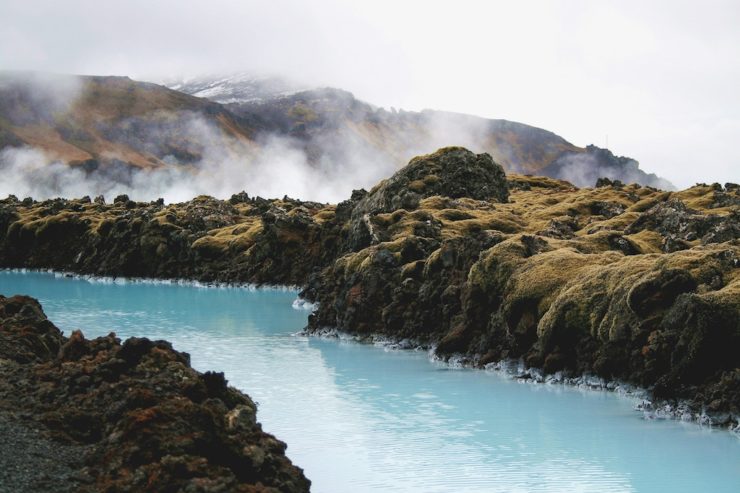Fun science fact…
Water is called the “universal solvent” because it can dissolve more substances than any other liquid. This is important to every living thing on earth.
Water Types
Soft water is water very low in minerals.
Hard water is water that contains minerals.
Very hard water contains more minerals.
Demineralised water is water with almost all minerals removed.
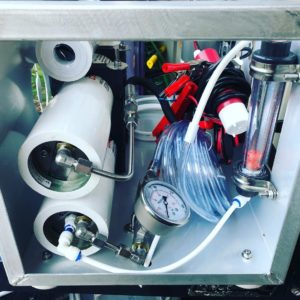
Reverse Osmosis
Rainwater is naturally soft water, it contains only very small amounts of sodium ions and no other ions like magnesium, calcium, potassium etc.
Without going into the science behind this process, water will dissolve magnesium, calcium and other ions while traveling along or through the ground. The more ions it encounters the more ions it will dissolve and the harder the water will become.
This means that, as nature intended, wherever water goes, either through the ground, or through our bodies, it takes along valuable chemicals, minerals, and nutrients.
The RO process is non-selective, along with removing the bad stuff like: heavy metals, viruses, bacteria, polyps and cysts (to name a few) reverse osmosis (RO) removes mineral ions, including sodium, chloride, potassium, magnesium and calcium (again to name a few).
Because an RO machine removes approximately 99% of totally dissolved solids (TDS) what remains behind in the product water is dependent on the TDS content of the source water.
Take for example seawater, it has a (TDS) reading of about 36000 mg/L (ppm), now not all of these dissolved solids are mineral ions but the vast majority of them are. So, if we were to remove 99% of these dissolved solids we would have product water with about 360 ppm of TDS.
If the source water was from a fresh water supply that has an initial TDS reading of, say 150ppm, then the resulting product water would have a TDS reading of about 1.5 ppm, this is classed as demineralized water or what we refer to as ‘demon water’.
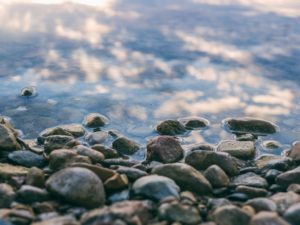
What is demineralised or as we call it demon water?
As you might guess by the name, demineralised water (also referred to as deionized water) is almost completely free of minerals such as magnesium, calcium and a long list of other naturally occurring, dissolved minerals.
Demineralised water is generally defined as having between 1-10 ppm of TDS. By contrast, spring or mineral waters have TDS levels of between 50-300 mg/L.
So what is the best water for good health?
The term “demineralised water” sounds innocent enough, but is it safe drinking water?
Many authorities say ‘NO’ and have gone on record to state that drinking it will adversely affect your health.
One of those authorities is the World Health Organization (WHO) which produced a report in 2004 titled “Health Risks From Drinking Demineralised Water”.
In it, they state the following:
“It has been adequately demonstrated that consuming water of low mineral content has a negative effect on homeostasis mechanisms, compromising the mineral and water metabolism in the body.”
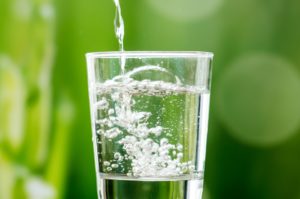
Why would consuming water with a lower mineral content have a negative effect on our health?
The WHO breaks up the answer into 5 categories:
- Direct effects on the intestinal mucous membrane, metabolism and mineral homeostasis or other body functions.
- Little or no intake of calcium and magnesium from low-mineral water.
- Low intake of other essential elements and microelements.
- Loss of calcium, magnesium and other essential elements in prepared food.
- Possible increased dietary intake of toxic metals.
To explain in simpler language, demineralised water isn’t the safest drinking water for you health for these 4 reasons:
- Does not provide minerals essential to our health.
The minerals in our drinking water are essential for good health and water is one of the means that our bodies absorb these minerals. Furthermore demineralized water may disolve minerals from your body as it passes through. - Strips foods of essential minerals when used for cooking, making juice, baby formula, etc.,
As said earlier water will dissolve minerals from any source this included food, so boiling vegetables in demineralized water will cause the minerals from the vegetables to be left in the boiling water. - Attacks metal surfaces such as copper and lead plumbing and fittings, tanks and even bottles, dissolving metals and other impurities into the water. This can mean that your water will pick up impurities and heavy metals from your tanks and taps and cooking vessels that you will then ingest.
- Demineralised water negatively effects various aspects of our biology.
The WHO has stated that an optimal TDS reading for good health is between 200 and 400 ppm.
The WHO Report “Health Risks from Drinking Demineralised Water” concludes in part that:
“Sufficient evidence is now available to confirm the health consequences from drinking water deficient in calcium or magnesium. Many studies show that higher water magnesium is related to sudden death from Cardiovascular Disease (CVD). This relationship has been independently described in epidemiological studies with different study designs, performed in different areas, different populations, and at different times.
In addition to an increased risk of sudden death, it has been suggested that intake of water low in magnesium may be associated with a higher risk of motor neuronal disease, pregnancy disorders (so-called preeclampsia), sudden death in infants, and some types of cancer.
Recent studies suggest that the intake of soft water, i.e. water low in calcium, is associated with a higher risk of fractures in children, certain neurodegenerative cardiovascular diseases, pre-term birth and low weight at birth and some types of cancer.”
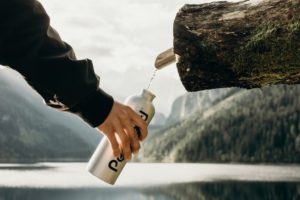
So how can you quickly easily re-mineralise your water?
- There are a number of inline remineralizing cartridges available on line these can be installed on your drinking water tap, but if your using seawater as your water source you may want to bypass this filter.
- Trace Mineral or Electrolyte Drops (from chemist or health food shops)
Electrolyte or trace mineral drops are an easy way to quickly add elements like copper, manganese, selenium, iron, calcium and magnesium into your drinking water. - Himalayan Salt, just add a tiny pinch of Himalayan Salt, to each litre of filtered water. Himalaya Salt can provide you with more than 60 different trace elements.
Do not use processed and inferior table salt, which contains almost only sodium and chloride as it is not sufficient. - Alkaline Water Filter Pitcher
Alkaline water filter pitchers will re-filter the water before adding calcium, magnesium and other minerals back into it and thereby balancing pH-levels. - Or as we generally do just add an 1/8th of a teaspoon of both bicarbonate soda and magnesium chloride (both available in bulk on ebay) to a 2 litre bottle of water and give it a good shake.
Don’t forget you can use your TDS meter to make sure you have not overdone the re-minerlising and have it at an optimal 200 to 400 ppm.
Please Note:
The goal of this post is not to frighten anybody, we simply want to point out this issue and provide all the the necessary information to insure your drinking the best water. Drinking demineralised water in the short term does not cause ongoing health issue and there is no reason to worry about mineral deficiency in regards to other minerals, because the WHO also states that “For the majority of other elements drinking water provides less than 5% of total intake”. These elements include iron, zinc, copper, iodine, phosphorus and chloride among others.


